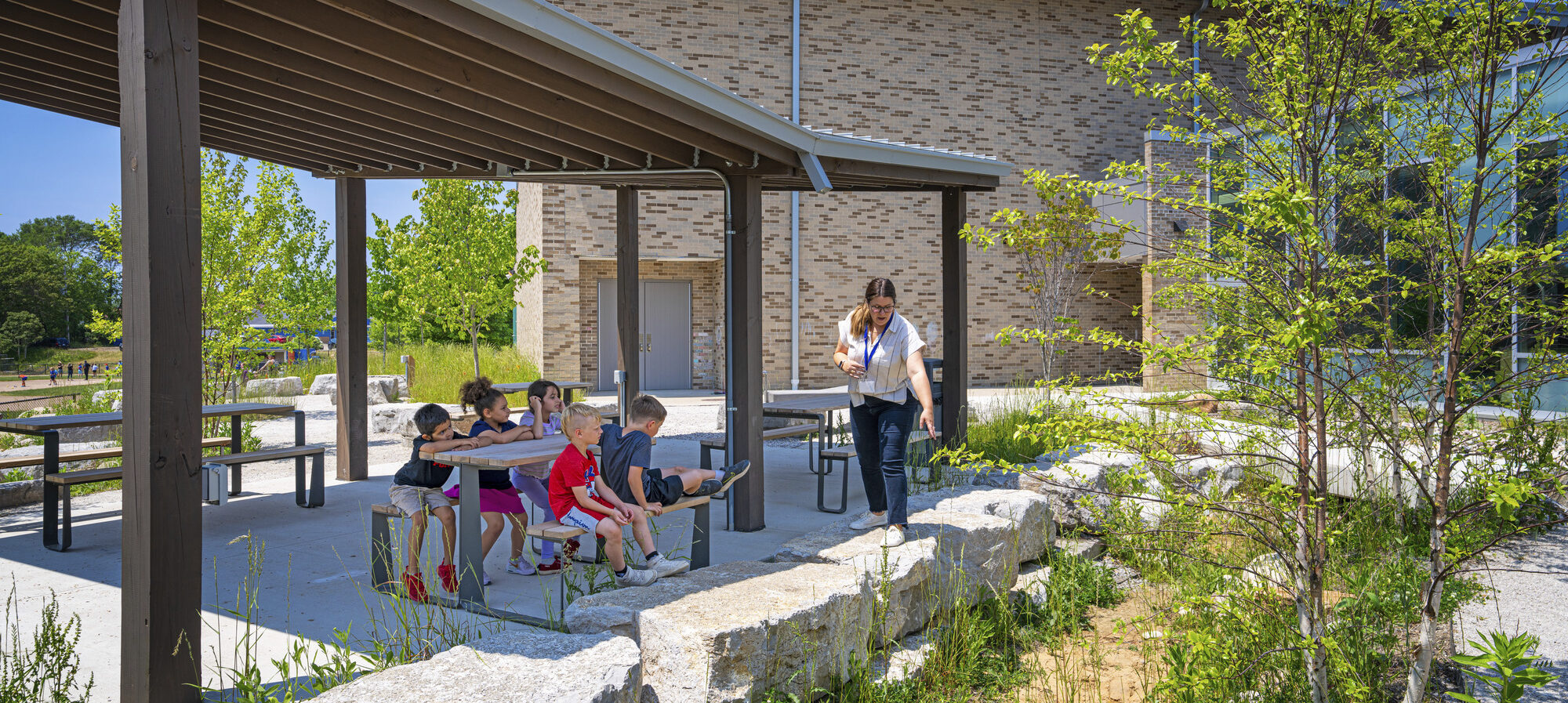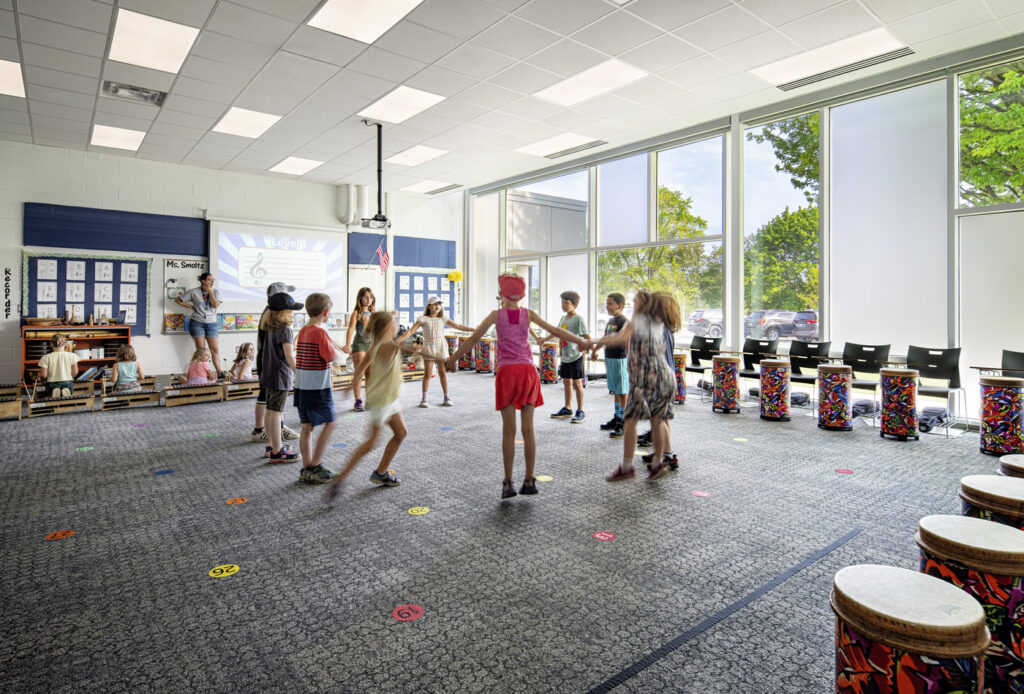Outdoor play is about more than just having fun – it provides kids with physical exercise, encourages relationship building, and provides ample learning opportunities. Spending time outdoors, whether structured or unstructured, can blur the lines between play and learning for children of all ages.
There are numerous benefits for kids who regularly engage with outdoor and nature-based play activities as they grow. Beyond just physical exercise, outdoor play can teach students the skills they need to succeed in adulthood, such as autonomy through unstructured play, cooperation through working together, and risk assessment from testing out new environments. While preschool and early childhood programs are leading the charge in including nature-based elements into traditional learning, students at each developmental stage can benefit. Whether we are bringing structured activity into nature, or nature into structured activity, there are outdoor driven strategies any K-12 district can adopt.
Early Childhood and Elementary
Playscapes designed to address the unique needs of early childhood and elementary-age students require multiple areas for physical play that are inclusive yet challenging. Early elementary play can be more focused on motion and spinning, which provided positive, vestibular stimulation for brain development. “Spinning is an important form of sensory input that the brain takes in and processes that can help with balance, decision-making, and even attention span,” says GMB landscape architect Dana Hernalsteen. “Incorporating different areas of play also gives students a choice in how they want to explore and engage with their surroundings.” For example, pavement activities can take many shapes and promote different types of play, from group games like foursquare, to active learning from painted maps or solar systems, and social emotional needs like peace paths and buddy circles.
Ludington’s new elementary school aimed to create meaningful connections to the outdoors, an important initiative for the district. All the classroom wings connect outside through covered outdoor learning areas to playgrounds that encourage both outdoor learning and play. Multiple playgrounds address the needs of students from kindergarten through 5th grade on one campus. Broken down into distinct age categories, each playscape was designed to create meaningful play as students grow. For the youngest learners, areas that promote balance, like spinners and climbers, and creativity, like chalk and sandboxes, were included. For the oldest group, more challenging spaces for parkour and rope climbing encourage strength building, teamwork, and competition.
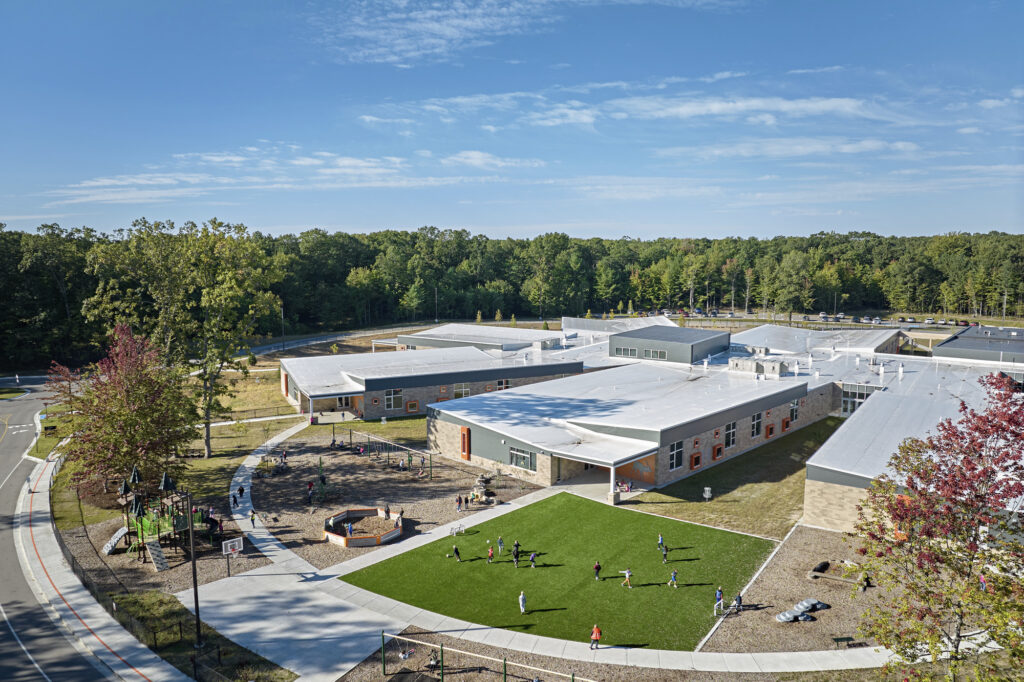
Upper Elementary
As kids grow, creating physical challenges that are flexible and promote problem-solving keeps them involved. Playscapes at this age are designed with more diverse play opportunities, like larger structures with multiple heights, varied learning elements, seating, and games. Kids naturally want a challenge, but everyone’s challenge is different. Offering multiple areas for discovery is key.
Hudsonville‘s new intermediate school was designed with the specific needs of students in the 5th and 6th grades in mind. Their unique playscape area was designed to encourage physical activity and socialization at this transitional stage. The multi-tier playscape offers different opportunities and zones for students to play, learn, and observe. The outdoor space includes a climbing obstacle course with turf that encourages agility and competitive play, a running track, basketball hoops and pavement games area, multiple seating zones, and a play wall with creative graphics. Academic instruction can also take place in the outdoor area, with enough seating and tables for a full classroom. Each section of the play area is accessible and is enhanced by shade cover and natural landscaping.
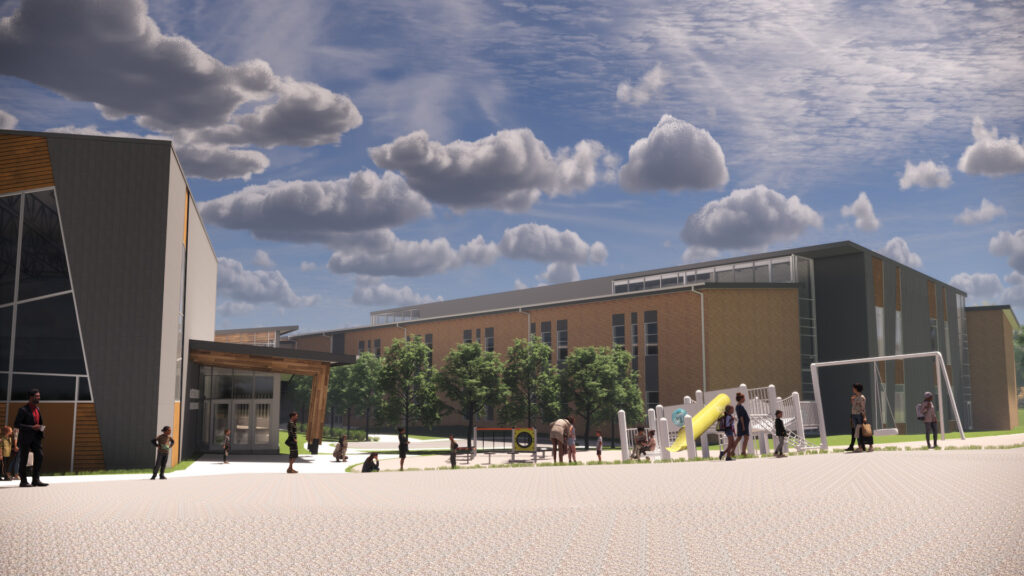
Middle School or Junior High
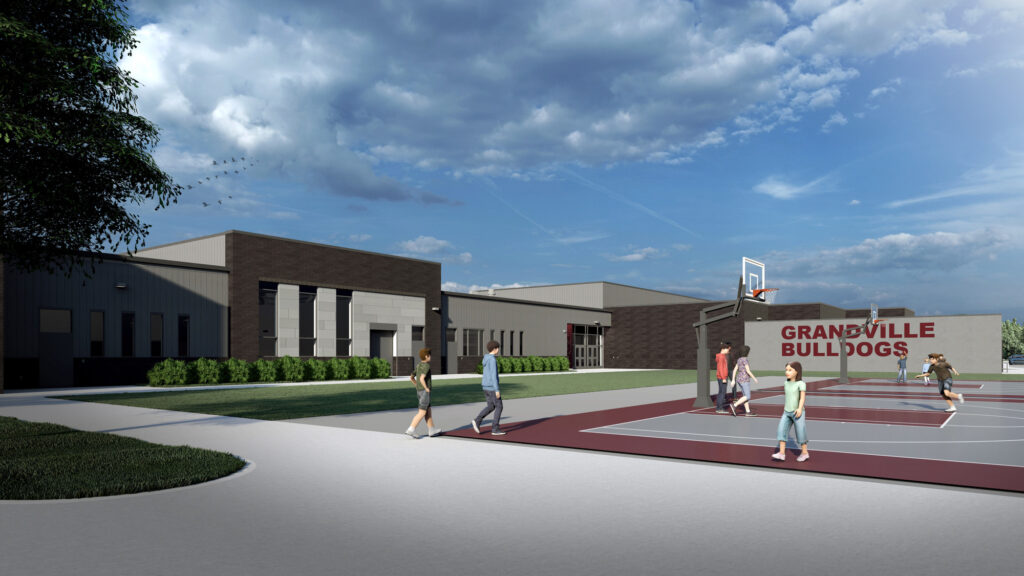
Middle school and junior high students enjoy more time spent on building emotional relationships and their outdoor spaces reflect that shift away from mostly physical. These playscapes have more gathering spaces, observing areas, competition, and games. Intentional organization between structured and free play with adjacent sitting elements allows everyone the opportunity to be involved. Schools may choose to incorporate basketball courts, turf areas, bleachers, and sports equipment for these students.
Multiple athletics spaces designed for Grandville’s new 7/8 school give students plenty of opportunity to increase their physical activity and competitive sport pursuits. Outside, middle school-aged students can participate in recreation time on the basketball courts, 40-meter sprint turf, or athletic fields. An outdoor tiered seating area near the adjacent wetlands also gives students a chance to learn in an outdoor setting.
Special Education and Accessibility Needs
Creating an inclusive and accessible playscape presents students with many opportunities. Completely barrier-free design, with compliance for national standards, can be just as fun, intentional, and creative as traditional play areas. Incorporating the necessary signage, railings, fencing, and transitions into the natural surroundings where possible makes the accessibility requirements feel like just another part of the design. At Hamilton Community Schools, a special education wing’s new playground provides accessible play for all students. An ADA accessible ramp into the rubberized surface area for wheelchairs is the first impression of accessible use. The playground also includes equipment that can accommodate wheelchair users plus their adult paraprofessionals. “Incorporating different kinds of sensory elements from texture, sound, height levels, spinning, and signage gives the playscape something for everyone,” said GMB landscape architect Chris Markham. “Multiple zones throughout the area and the new equipment allow kids of different abilities to interact and play together without physical constraints.”
Serving Multiple Age Groups
At schools where multiple age groups share a single campus or facility, outdoor spaces can be creatively utilized to address the needs of multiple age groups. By blending programs together in flexible spaces that promote both play and learning on a smaller footprint, yet intentionally separating age group activities, districts can accommodate outdoor play for any age group. Potterville Public Schools is utilizing their shared campus to create outdoor areas that fit students from kindergarten through high school. Similar age zones are placed near each other to create the appropriate separation of activities while maximizing their square footage. The youngest group’s play area is enclosed in a courtyard and requires the least amount of space, while the middle school group will have play structures of varying scale and opportunity for free play. High schoolers will be able to physically exert themselves on play fields if they choose or can utilize seating with shade to read, study, and converse.

The needs of each district are unique and can be influenced by the needs of the curriculum, the local community, budget constraints, or student experience. Overall, outdoor play improves children’s sensory skills, cognitive and social emotional development, and increases attention spans, which creates a positive environment for successful learning.
This article was originally published in the Michigan Chapter of the American Society of Landscape Architects MiSITES Magazine in May, 2025.

